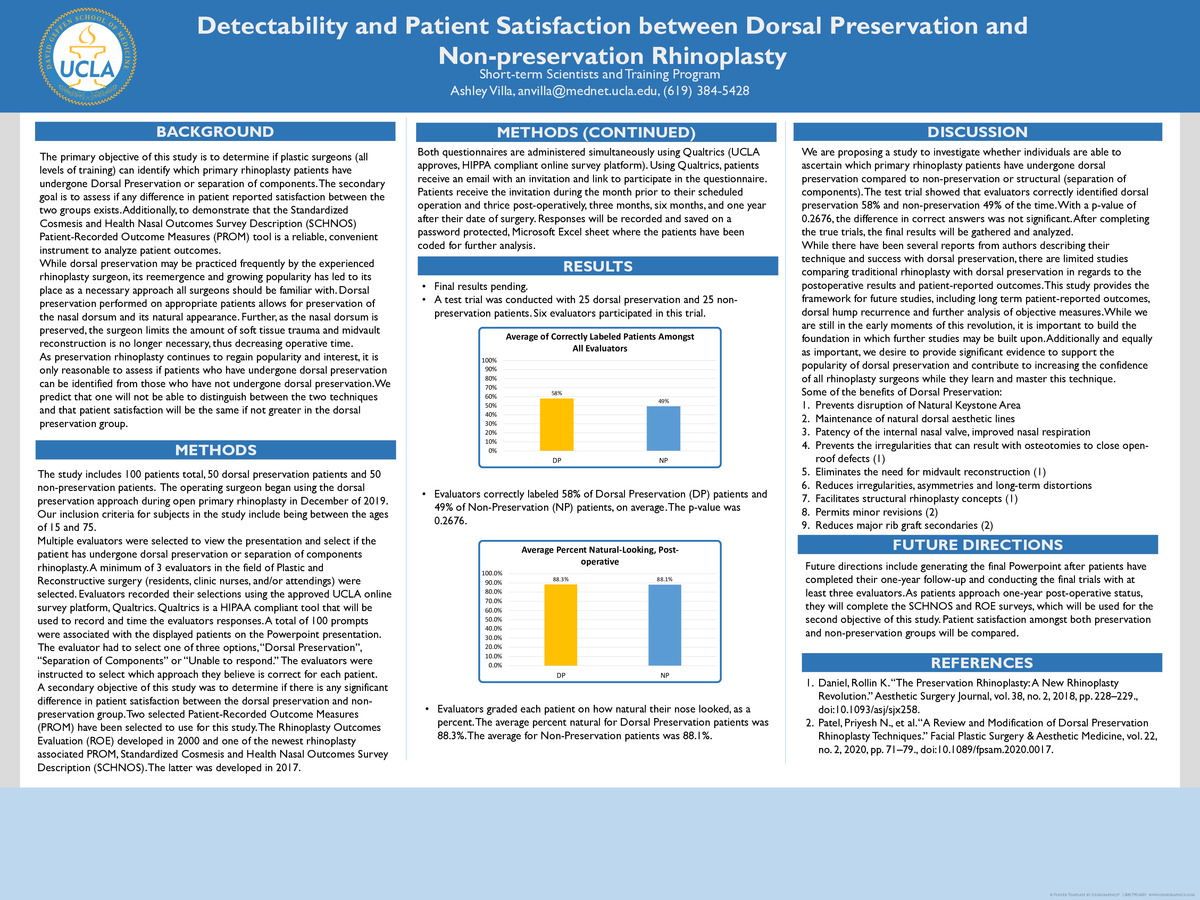-
Author
Ashley Villa -
PI
Dr. Jason Roostaeian
-
Co-Author
Dr. Sean Mccleary
-
Title
Detectability and Patient Satisfaction between Dorsal Preservation and Non-Preservation Rhinoplasty
-
Program
STTP
-
Other Program (if not listed above)
-
Abstract
Abstract
The current renaissance of preservation rhinoplasty has led rhinoplasty surgeons to implement these concepts into their practice. Dorsal Preservation is one type of preservation rhinoplasty that has been performed by the PI with increasing frequency in order to achieve a more natural appearing result. Further, as surgeons become more familiar with this approach at preserving the oseocartilaginous dorsum of the nose, the indications continues to expand. It is only natural to begin comparing the traditional technique of separating the components with the dorsal preservation approach.
Objective: This study aims to establish the foundation by initially determining whether one can identify which patients have undergone dorsal preservation. A secondary goal of this study is to compare patient satisfaction following rhinoplasty using two patient-reported outcome measure (PROM) questionnaires. the Rhinoplasty Outcome Evaluation (ROE) and the Standardized Cosmesis and Health Nasal Outcomes Survey (SCHNOS).
Methods: A total of 100 primary rhinoplasty patients (50 dorsal preservation and 50 non-preservation) were included from a single surgeon. Pre- and Post-operative photos were presented to 3 independent plastic surgeons not associated with the operating surgeon. Evaluators were asked to identify the surgical approach (dorsal preservation vs traditional/separation of components). Additionally, eligible patients completed two PROMS, the ROE and SCHNOS preoperatively and postoperatively at 3 months, 6 months, and 1 year.
Results: While assessing the dorsal preservation patients, evaluators had an accuracy of 58%. With non-preservation patients, accuracy was 49%.
Conclusion: While long-term results of dorsal preservation will continue to be an area of interest and future studies, this study's aim is to lay down the groundwork by comparing the two groups of primary rhinoplasty patients. We desire to demonstrate that dorsal preservation is an important approach that every rhinoplasty surgeon should be equipped to consider when evaluating their patients.
-
PDF
-
Zoom

